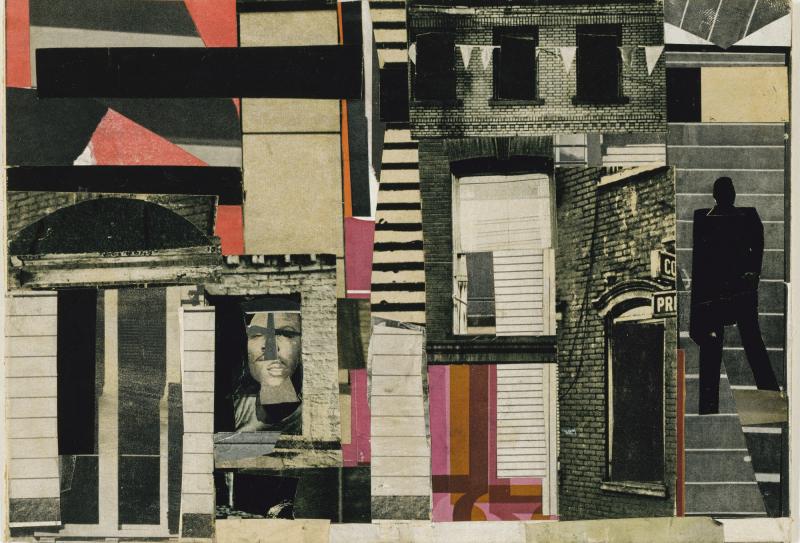^ Romare Bearden Train Whistle Blues No. 1 1964
Romare Bearden (1911-1988) used Dada collage techniques developed while studying with George Grosz at NYC’s Arts Student League to create groundbreaking collages that led him to be hailed as one of America’s greatest 20th century’s artists. His work mixes scenes of everyday life for African Americans in mid-century USA with mythological and pastoral imagery and scenes of religious ritual. For Bearden, collage symbolised ‘the coming together of tradition and communities’.
Inspired also by Mexican muralists such as Diego Rivera and José Clemente Orozco, Bearden brought communal spirit to his compositions. It was during the Civil Rights Movement that Bearden’s collages found an intersection between activism, community and current events. He saw collage as a socially responsible mouthpiece where he could transmute news and magazine coverage into political statements. Much like the Pop Artists and Dadaists, he was a pioneer in using popular and everyday materials – in this case glossy magazines – in order to make larger comments.
The artist confronts chaos. The whole thing of art is, how do you organize chaos?
Romare Bearden
The contemporary moment was also rendered through Classical allegory, as hew would recast the likes of Odysseus as African-American, drawing a through-line of the universal into the stories he told. The power of collage and photomontage is its ability to collapse time and space, telling new stories from old materials, which Bearden took up as a challenge to connect real life with the abstract.

All images shared here in fair use for educational purposes.




Further Reading:
- Romare Bearden Foundation – website
- MoMA Listing: Romare Bearden – website
- Romare Bearden’s Collage, A Centennial Celebration – website
- The art of Romare Bearden – teaching resource (PDF)
- Romare Bearden: American Modernist (2011) – book
- The art of Romare Bearden (2003) – book
- Six Black Masters of American Art (1972) – book
